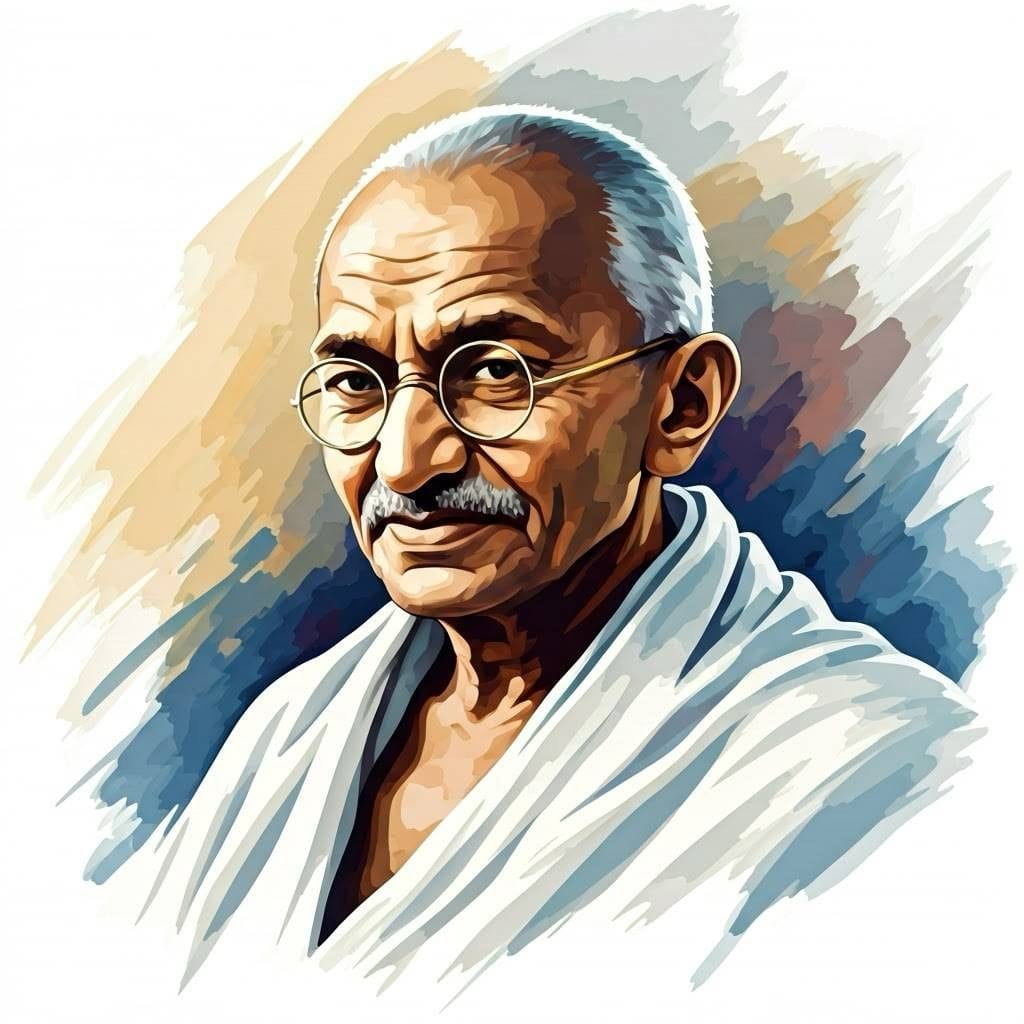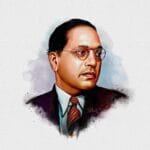Introduction
Mohandas Karamchand Gandhi, known to the world as the “Mahatma” and in India as the “Father of the Nation,” was not merely a political leader but one of the most influential philosopher–statesmen of the 20th century. (Guha, 2018)
Gandhi was born in Porbandar, Gujarat, on October 2, 1869. His entire life was a unique experiment based on the principles of truth, non-violence, and social justice.
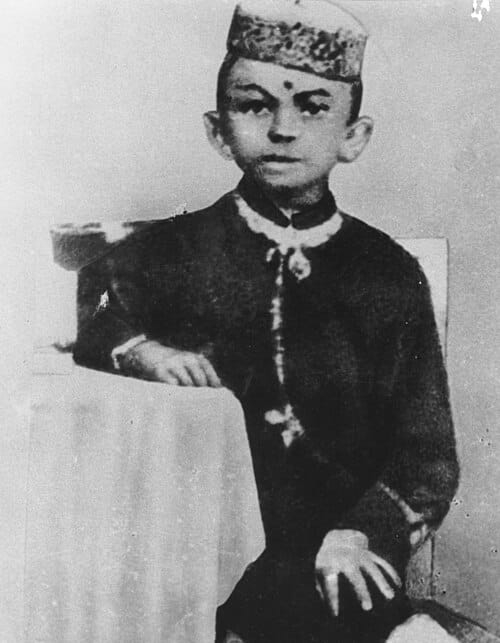
Enemy of peace, on 30 January 1948, Nathuram Vinayak Godse assassinated Gandhiji by shooting 3 bullets in his chest. Godse was the first terrorist of independent India, but Gandhiji’s thoughts are still relevant today.
Gandhi’s entire struggle had three main pillars: Satyagraha (insistence on truth), Ahimsa (abstinence from violence, both physical and mental), and Swaraj (self-rule, not just political independence). (Gandhi, Hind Swaraj)
Through these principles, he challenged the British Empire and laid the foundation for Indian independence, which was unprecedented in history. (Fischer, 1950)
This article presents an in-depth analysis of Mahatma Gandhi’s early life, the evolution of his ideas, his decisive contribution to the freedom struggle, and the ideological criticism of his philosophy.
We will examine in depth his legacy from its Political, Social and Philosophical dimensions, which opens a great chapter in Indian history. (CWMG Vol. 1-98)
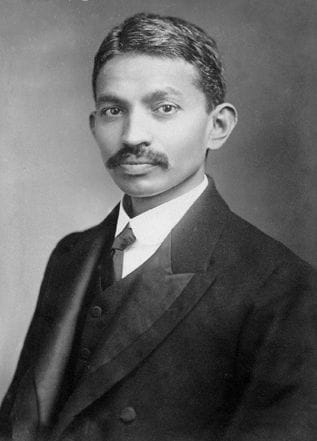
Early Life and Evolution of Thought
Gandhi’s early life laid the foundation for his future greatness.
Early Life, Education and Married Life
Mohandas Karamchand Gandhi was born in Porbandar (Kathiawar) on October 2, 1869. His father, Karamchand Gandhi, was the Diwan of the Porbandar State, and his mother, Putlibai, was a religious woman. (Gandhi, Autobiography)
Gandhi began studying religious texts and the lives of great men as a child.At the young age of 13, he was married to Kasturba Makhanji Kapadia (lovingly called Ba). (Gandhi, Autobiography)
He received his early education in Porbandar and Rajkot and, in 1888, traveled to England (London) to study law. There, he developed a strong belief in the principles of vegetarianism and ethical living. (CWMG, Vol. 2)
Though he mastered the techniques of British jurisprudence and qualified as a barrister. However, his ultimate goal was not professional success but moral and social reform.
Upon returning to India in 1891, Gandhi began his law practice in Bombay (now Mumbai) and Rajkot, but achieved little success. (Guha, Gandhi before India)
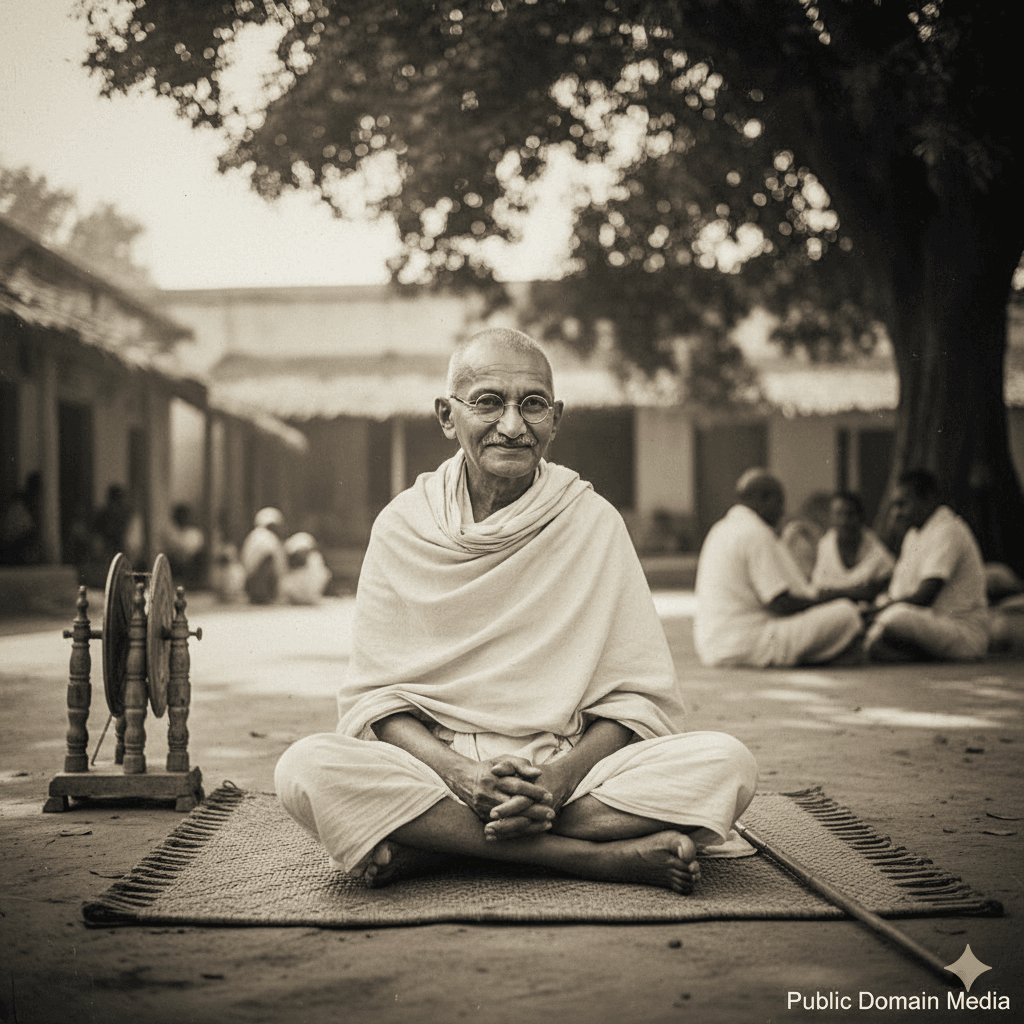
Transformation in South Africa and evolution of Satyagraha
In 1893, Gandhi went to South Africa on a one-year contract to handle a legal case, where he began his legal practice. It was here that marking the beginning of his transformation from an ordinary lawyer to the “Mahatma”. In South Africa, he faced harsh Racial discrimination. (Gandhi, Satyagraha in South Africa)
A defining moment came on 7 June 1893 at the Pietermaritzburg railway station, when he was thrown out of a first-class compartment despite having a valid ticket—simply because he was an Indian. This humiliation awakened in him the resolve to resist injustice. (Fischer, CWMG Vol. 8)
He realized that passive resistance was not enough; what was needed was an active moral force against injustice.
From this realization was born the concept of Satyagraha—the “Power of truth” or “Insistence on truth”.(Gandhi, Satyagraha in South Africa)
He created a new method of social and political resistance based on non-violence and moral strength, successfully leading the Satyagraha against the Asiatic Registration Act in South Africa. (CWMG Vol. 8)
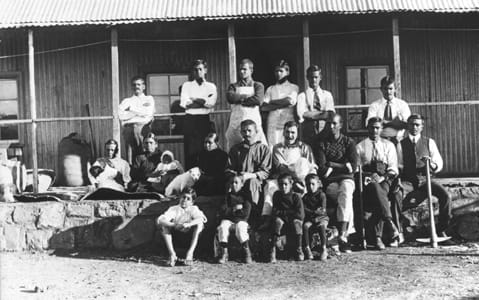
Establishment of Tolstoy Farm and Phoenix Settlement
In South Africa, Gandhi founded two important communities:
- Phoenix Settlement (1904): Here he implemented principles of communal living, labor, and self-reliance. (Gandhi, Autobiography)।
- Tolstoy Farm (1910): Tolstoy Farm (1910) was founded inspired by the ideas of Leo Tolstoy. As a result, the farm became a center for training his philosophical and political workers. (Guha, Gandhi before India)
Key Contributions to Indian Freedom Struggle
At the request of Gopal Krishna Gokhale, Gandhi returned to India in 1915 and soon became the undisputed leader of the Indian freedom movement.
Initial Experiments and Mass Mobilization
After returning to India, Gandhi began experimenting with Satyagraha in local struggles:
- Champaran Satyagraha (1917): Protested against the exploitation of indigo farmers under the ‘Tinkathia system’ in Bihar. (Tendulkar)
- Kheda Satyagraha (1918): Led farmers in Gujarat against tax collection during famine, compelling the British to grant tax relief. (CWMG Vol. 14)
- Ahmedabad Mill Strike (1918): For the first time, Gandhi used fasting as a moral weapon to secure justice for mill workers. (Fischer)
National Movements under Gandhi’s Leadership: Three decisive battles
Gandhi transformed the national movement from the Congress platform into a mass movement and dealt three major blows to British rule:
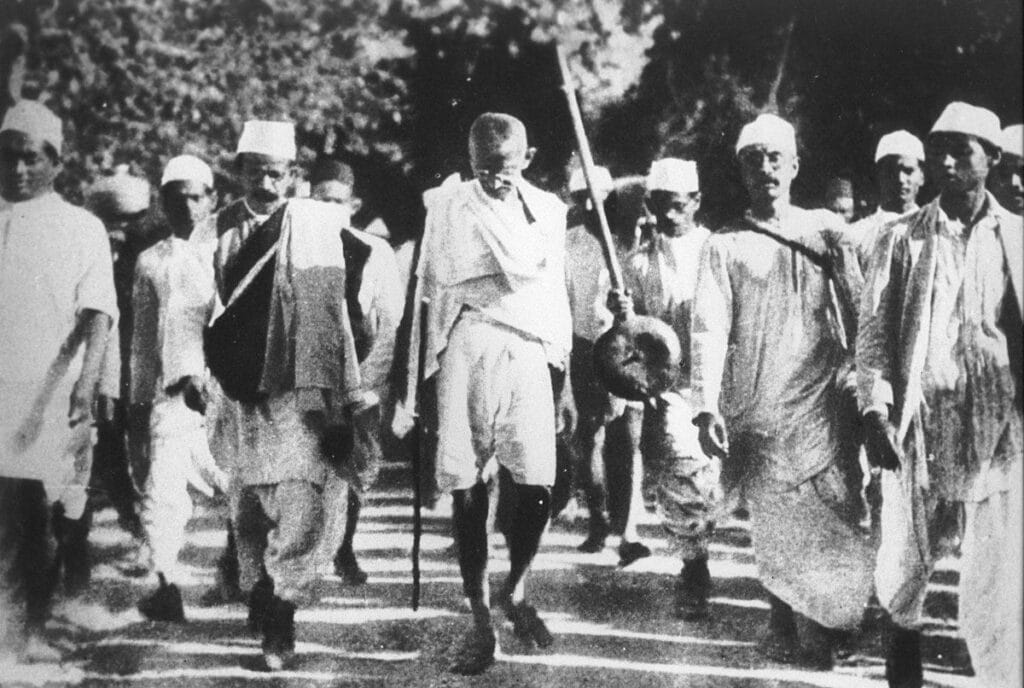
Non-Cooperation Movement, 1920-22
Cause: Launched in response to the Jallianwala Bagh massacre and in support of the Khilafat Movement.
Strategy: Boycott of foreign goods, withdrawal from British institutions and honors, and adoption of Swadeshi products (especially Khadi). (CWMG Vol. 21)
Outcome: Gandhi suspended the movement after the Chauri Chaura incident in 1922, believing violence had betrayed the spirit of non-violence(CWMG Vol. 22)
Civil Disobedience Movement and Dandi March, 1930
Cause: Demand for Purna Swaraj (complete independence) and protest against the repressive salt tax.
Event: On 12 March 1930, Gandhi began a 241-mile (about 387 km) march from Sabarmati Ashram to Dandi, where he symbolically broke the salt law on 6 April (Tendulkar)
Outcome: This act of civil disobedience inspired millions and drew global attention to India’s freedom struggle। (Louis Fischer)
Quit India Movement, 1942
Cause: India’s forced involvement in World War II and the failure of the Cripps Mission.
Slogan: On 8 August 1942, at the Bombay session of the All India Congress Committee, Gandhi gave the historic call of “Do or Die” (CWMG Vol. 76)
Outcome: Despite immediate arrests of Gandhi and other leaders, the spontaneous uprising made it clear that British rule in India could no longer continue (Guha)
Gandhi’s Philosophy and Ideology
Gandhi’s philosophy was a complex blend of religious faith, moral discipline, and political theory.
Satyagraha, Ahimsa, and Purity of Means
- Satyagraha: For Gandhi, Satyagraha was not merely a mode of protest but a moral force grounded in truth, non-violence, and self-suffering. Its goal was to win over the opponent through love and sacrifice, not hatred. (Gandhi, Satyagraha in South Africa, CWMG, Vol. 12)
- Ahimsa (Non-violence): Non-violence, to Gandhi, was not just abstention from physical harm but purity of thought, word, and deed. He considered it the most powerful weapon of humankind. (Gandhi, Autobiography)
- Purity of Means and Ends: Gandhi firmly believed that just means were as important as just ends. A righteous goal could never be achieved through unethical methods. (Gandhi, Hind Swaraj)
Concept of Swaraj and Sarvodaya
- Swaraj: For Gandhi, Swaraj meant not only political independence but also personal, social, and spiritual freedom. True independence, he believed, would come only through moral and social awakening and through decentralized, self-reliant villages (Gram Swaraj). (Gandhi, Hind Swaraj; Ramachandra Guha, Bharat ka Gandhi, p. 400)
- Sarvodaya and Trusteeship: Inspired by John Ruskin’s Unto This Last, Gandhi’s economic vision of Sarvodaya (welfare of all) emphasized moral use of wealth. (Gandhi, Autobiography)
- Under Trusteeship, he urged capitalists to treat their wealth not as private property but as a trust for the welfare of society. (CWMG Vol. 14)
Social Reform and Views on Religion
- Abolition of Untouchability: Gandhi considered untouchability a curse on Hinduism and tirelessly worked for its eradication, calling Dalits Harijans (“children of God”). (Tendulkar)
- Hindu-Muslim Unity: A staunch advocate of communal harmony, Gandhi fasted several times to restore peace during communal violence. (CWMG Vol. 88)
- Women’s Empowerment: He supported women’s freedom and encouraged their participation in public movements, inspiring leaders like Kasturba and Sarojini Naidu. (Guha)
Controversies and Criticism
A fair and factual understanding of Gandhi requires acknowledging the controversies surrounding him.
Ideological Differences with Dr. B. R. Ambedkar
Gandhi and Dr. B.R. Ambedkar had deep ideological differences on the issues of Dalits and the caste system.
- Caste System: Ambedkar demanded total abolition of caste, while Gandhi initially sought to remove untouchability but not the varna framework—though his views evolved later. (Ambedkar, Annihilation of Caste)
- Separate Electorates: Ambedkar advocated separate electorates for Dalits; Gandhi opposed it, fearing division within Hindu society, and fasted unto death in protest. The Poona Pact (1932) resolved this by introducing joint electorates with reserved seats for Dalits. (Tendulkar; CWMG Vol. 15)
- Village Swaraj: Ambedkar rejected Gandhi’s idea of Gram Swaraj, calling villages centers of caste oppression. (Ambedkar, Annihilation of Caste)
Economic Model and Critique of Industrialization
- Gandhi criticized Industrialization and Modern Western Civilization, arguing that large-scale mechanization leads to exploitation, while others believed industrial development could uplift society. (Gandhi, Hind Swaraj; Guha, Bharat ka Gandhi, p. 500)
- Modern economists and Nehruvian thinkers considered Gandhi’s village-based economy impractical for India’s vast population. (Jawaharlal Nehru, The Discovery of India)
Stand on Partition and Political Compulsions
Gandhi Opposed the Partition of India throughout his life, declaring that it would happen only over his dead body. (CWMG, Vol. 16 & Vol. 88)
However, due to the Muslim League’s rigidity, growing communal violence, and the Congress leadership’s concessions, he ultimately had to accept the tragic reality of partition. During this time, he was in Calcutta and Noakhali, working tirelessly to quell communal riots rather than engaging in power politics. (Guha)।
Legacy or Heritage and Global Impact
Gandhi’s legacy transcends Indian borders and continues to guide the world even today.
National Legacy
- Indian Constitution: Gandhi’s ideas influenced the Indian Constitution’s principles of social justice, fundamental rights, and Directive Principles, particularly those promoting village panchayats. (Granville Austin, The Indian Constitution: Cornerstone of a Nation)
- Political Morality: He introduced an ethical dimension to Indian politics, inspiring generations of leaders to view politics as a moral duty rather than a pursuit of power.
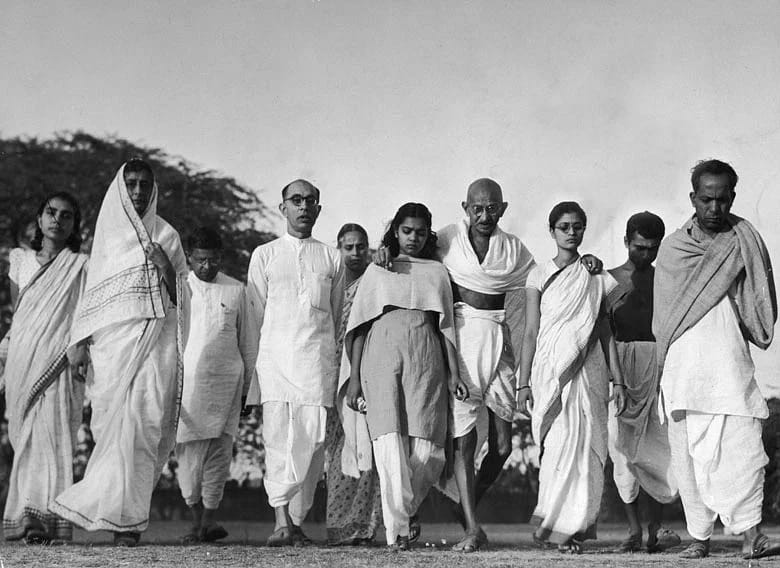
Global Influence and the Spread of Non-violence
Gandhi’s doctrine of non-violent resistance inspired global civil rights movements.
- Martin Luther King Jr.: In his struggle for civil rights in America, King explicitly adopted Gandhi’s philosophy of non-violence. (Fischer)
- Nelson Mandela: In South Africa, Mandela’s anti-apartheid struggle drew heavily from Gandhian methods. (Nelson Mandela, Long Walk to Freedom)
Relevance in the Modern World
- Environmentalism: In an era of ecological crisis, Gandhi’s vision of simple living, minimal consumption, and self-reliance remains profoundly relevant. “The Earth provides enough for everyone’s need, but not for everyone’s greed”. (CWMG)
- Democracy and Peace: His model of decentralized democracy and non-violent society offers solutions for conflict-ridden modern societies.
Conclusion and Sources
Mahatma Gandhi’s life was a complex textbook of truth, struggle, and paradox. Despite political victories and philosophical criticisms, he remained one of the most influential philosopher–statesmen of modern times. His greatest legacy lies in proving that the mightiest weapon is not violence but love and moral courage. He offered humanity a moral and effective way to resist injustice—one that transcends the limits of time.
स्रोत एवं संदर्भ
- M. K. Gandhi – The Story of My Experiments with Truth. (Navajivan Publishing House)
- M. K. Gandhi – Hind Swaraj or Indian Home Rule. (Navajivan Publishing House)
- M. K. Gandhi – Satyagraha in South Africa. (Navajivan Publishing House)
- The Collected Works of Mahatma Gandhi (CWMG). (Publications Division Govt. of India)
- D. G. Tendulkar – Mahatma: Life of Mohandas Karamchand Gandhi.
- Louis Fischer – The Life of Mahatma Gandhi.
- Ramachandra Guha – Gandhi before India.
- Ramachandra Guha –Gandhi: The Years That Changed the World.
- Ambedkar, B. R. Annihilation of Caste.
- Nehru, Jawaharlal. The Discovery of India.
- Austin, Granville. The Indian Constitution: Cornerstone of a Nation.

